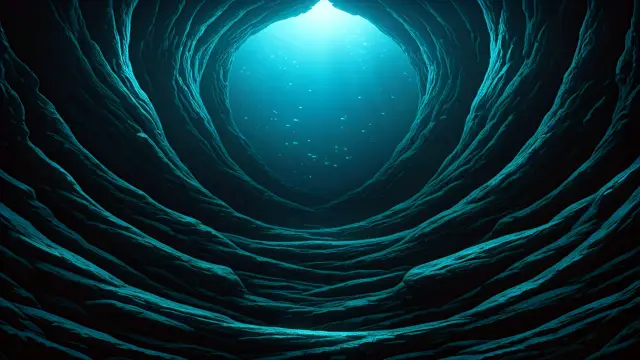H.P. Lovecraft, a master of horror, paints a vivid picture of the deep sea in his story Dagon. His words evoke a sense of dread and fascination. He describes the ocean as a dark, mysterious place filled with unknown creatures. Lovecraft writes, “I cannot think of the deep sea without shuddering at the nameless things that may at this very moment be crawling and floundering on its slimy bed.”
The Ocean’s Dark Secrets
Lovecraft’s imagery brings to life the idea of ancient beings lurking beneath the waves. He imagines these creatures worshiping stone idols and carving their likenesses into underwater monuments. This evokes a sense of ancient rituals and forgotten gods, suggesting that the ocean holds secrets far older than humanity.
The deep sea is indeed a realm of mystery. Scientists estimate that over 80% of the ocean is unexplored. This vast, dark expanse is home to many strange and unknown species. From bioluminescent creatures to giant squids, the ocean is full of life that remains largely a mystery to us. Lovecraft taps into this fear of the unknown, suggesting that there are things in the ocean that we cannot comprehend.
A Dreadful Future
Lovecraft’s vision goes beyond mere description. He expresses a fear of what might happen if these ancient beings were to rise from the depths. He writes about a day when they might drag down the remnants of humanity, saying, “I dream of a day when they may rise above the billows to drag down in their reeking talons the remnants of puny, war-exhausted mankind.”
This idea reflects Lovecraft’s broader themes of cosmic horror. He often explores the insignificance of humanity in the face of vast, indifferent forces. The ocean, in this context, becomes a symbol of nature’s power and our vulnerability. Lovecraft’s fear is not just of the creatures themselves, but of the chaos they could unleash upon the world.
The Ocean in Literature
Lovecraft’s portrayal of the ocean has influenced many writers and filmmakers. His themes of ancient beings and cosmic horror can be seen in works like John Carpenter’s The Thing and Guillermo del Toro’s The Shape of Water. These stories echo Lovecraft’s ideas about the unknown lurking beneath the surface.
Moreover, Lovecraft’s work has inspired a subgenre of horror known as weird fiction. This genre blends elements of horror, fantasy, and science fiction, often featuring strange creatures and otherworldly settings. Lovecraft’s influence can be seen in modern authors like Caitlín R. Kiernan and Laird Barron, who continue to explore similar themes.
The Real Ocean
While Lovecraft’s vision is fictional, it resonates with real fears about the ocean. Environmental concerns, such as pollution and climate change, threaten marine life. The ocean is not just a backdrop for horror stories; it is a vital ecosystem that supports life on Earth.
Scientists are working to understand and protect our oceans. Organizations like Oceana and The Ocean Conservancy focus on marine conservation. They aim to raise awareness about the importance of healthy oceans and the threats they face.
Conclusion
H.P. Lovecraft’s Dagon captures the fear and mystery of the deep sea. His chilling words remind us of the unknown that lies beneath the waves. As we explore the ocean, we must also confront our fears and respect its power. Lovecraft’s vision serves as a warning about the potential consequences of ignoring the mysteries of the deep.
In a world where the ocean remains largely unexplored, Lovecraft’s haunting imagery continues to resonate. The deep sea is a place of wonder and terror, a reminder of the vastness of nature and our place within it.

